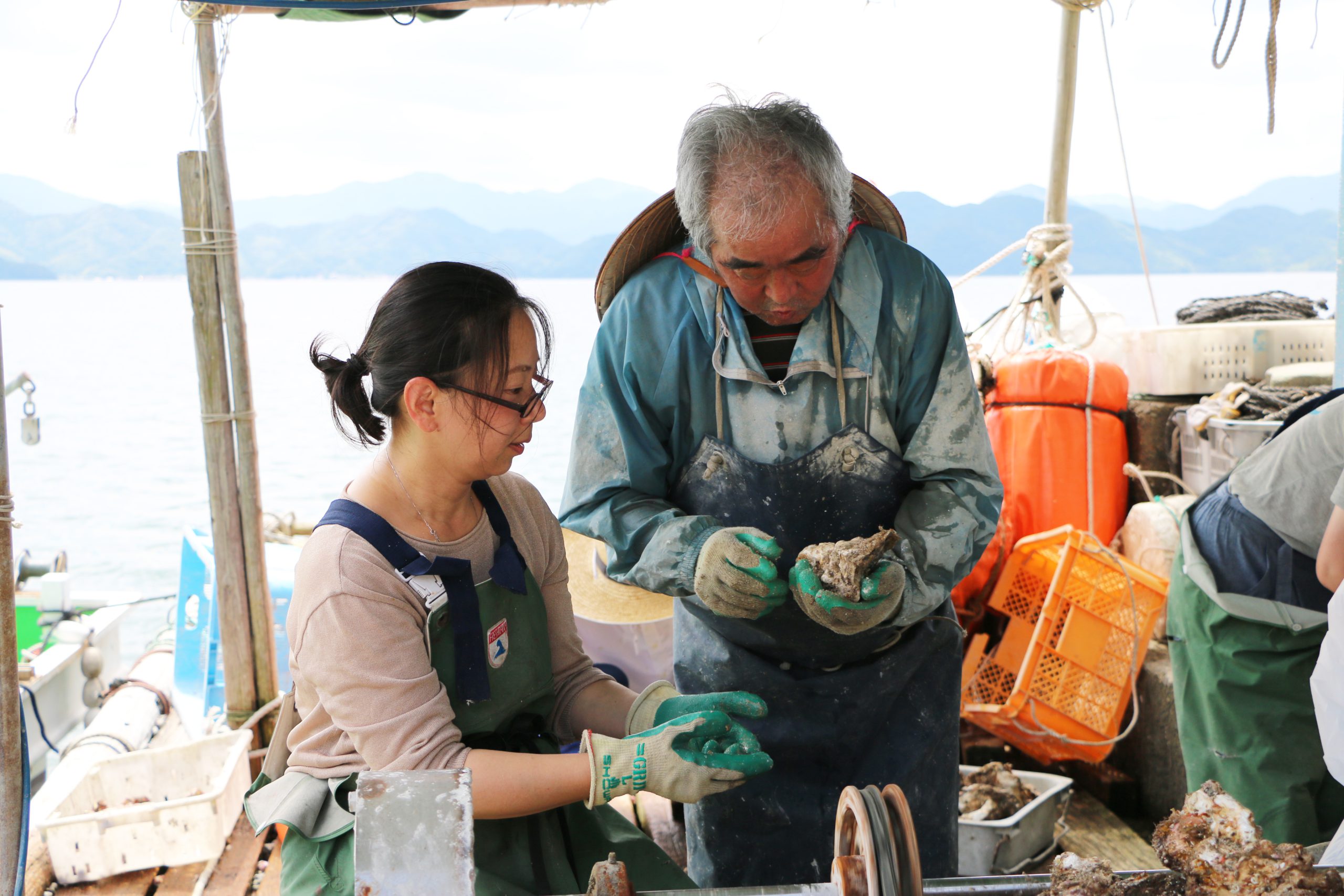- >
- Nanavi News
- >
- Naga Trip 2019 Report] Experience working with “Semura Oysters” to taste the rich milk of the sea.
Naga Trip 2019 Report] Experience working with “Semura Oysters” to taste the rich milk of the sea.
-
Last updated:
Aug 30, 2019
-
About the writer:
Nagato Tourism Convention Association

Slope 20 degrees or more, work vessels
On Saturday, July 27, the Naga Trip "Experience of working with Semura Oysters" was held at " Okichidori " on Aomi Island.

It was a midsummer day with temperatures exceeding 30°C and blue skies.
First, we will hear from Mr. Shintani, the organizer, about the schedule and rock oyster farming.

Next, we split into a work boat and a tour boat and departed for the area where rock oysters are cultivated.
There were no waves that day and we were able to get to the farm easily.


As soon as we arrived, we put the anchor into the sea.
Each rope holds about 60 rock oysters weighing approximately 1 kg, causing the boat to tilt toward the surface.
The slope was so steep that I had to hold on to something to stand.

As I observed with interest, I was told that "in the past, when we were working on a boat smaller than this one, it capsized because it could not bear the weight of the rock oysters.
The participants look at each other in surprise.


The staff also laughingly says, "It's usually a three-person job, so two people would be too slow," as they work.
Even so, the way they proceeded with their work was flawless.
When the participants saw the rock oysters, they commented, "They look like real rocks," and "They are so big you can't tell they are oysters," and actually touched them to confirm their impressions.
All fixings are concrete
We returned to the work area from the aquaculture farm and began to remove the rock oysters one by one from the ropes.

As I listened to the explanation for the first example, I was again amazed.
The rock bristles, ropes, and rock bristles are all secured to each other with concrete.
It turns out that the weight of the rope was not just the weight of the rock kid.
The participants thought they had been roped in, and instantly realized that it would take a lot of effort to remove them.

Nevertheless, it is time to start crushing the concrete.

It is not easy for women to crush them, and it takes dozens of times to do so.
It is a more strenuous task than one might imagine.


About 60 such operations.
Participants spent about an hour carefully separating them one by one.

Polishing work is our specialty
The more absorbed the participants were, the more they seemed to enjoy themselves.
They did not mind getting shards of broken pieces on their faces, and they were experiencing the joy of experiencing something they could not normally do.


Once the crushing process is complete, the "polishing" process begins.

The rock bristles are pressed against a special polishing machine to remove adhering matter.
Once this process is complete, you will see the rock oysters you often see in stores.

You will be lectured on which areas to brush and how much to brush.
Participants learned so quickly that it did not take long for them to pass a single check by the staff.

All remaining hands-on time is spent polishing.
The participants worked silently and polished more than half of the pieces.
Tasting the rich milk of the sea
On this Naga trip, each person tasted four oysters.
After the work experience, we will eat the rock oysters we polished ourselves at " Oyster Hut Semura ".

After slow grilling on both sides, the "meat" finally comes face to face.
The sheer size of the fish is a source of cheers.


Semura oysters are about three times larger than true oysters.
Its taste is also excellent, a "rich milk of the sea" that makes you think, "I see.


Oyster hut Semura was very busy that day as well.
Among them, the Naga Trip participants must have received an exceptional taste combined with the work experience.


